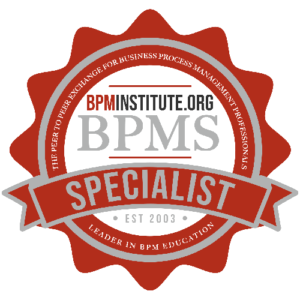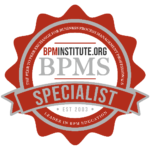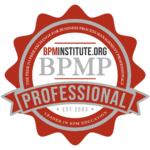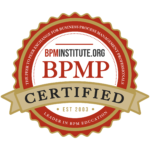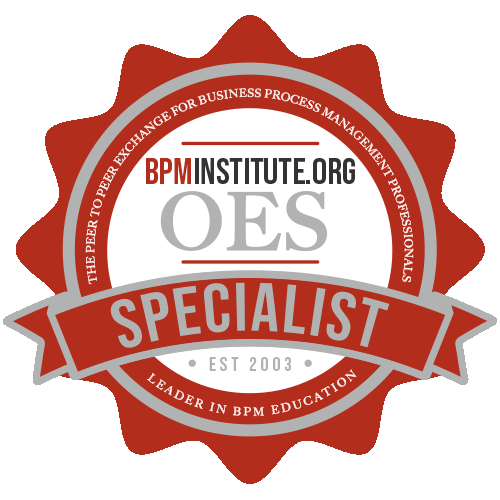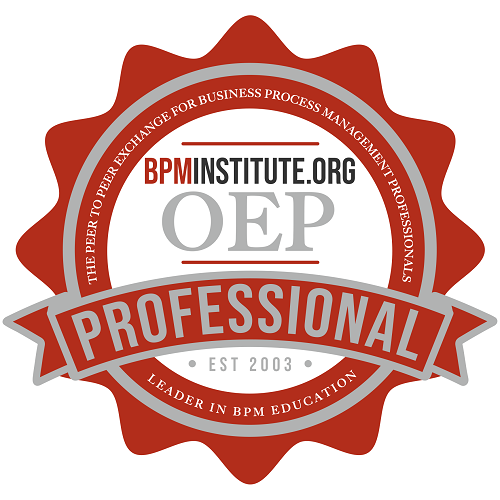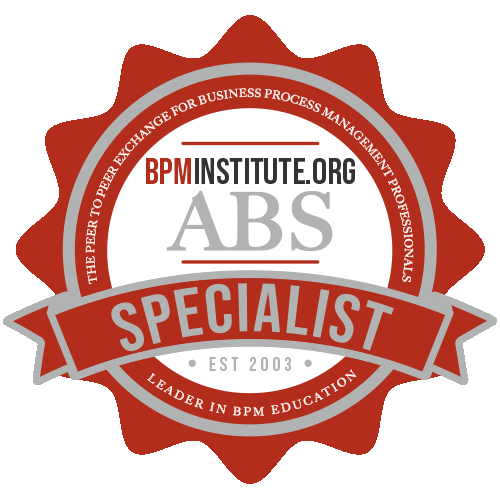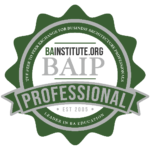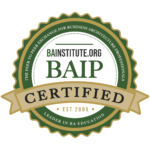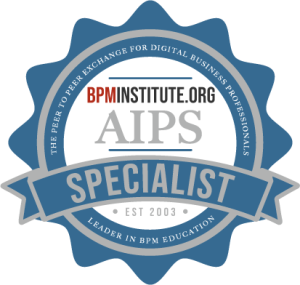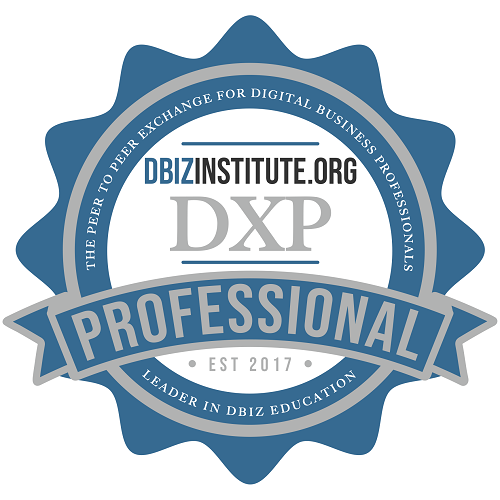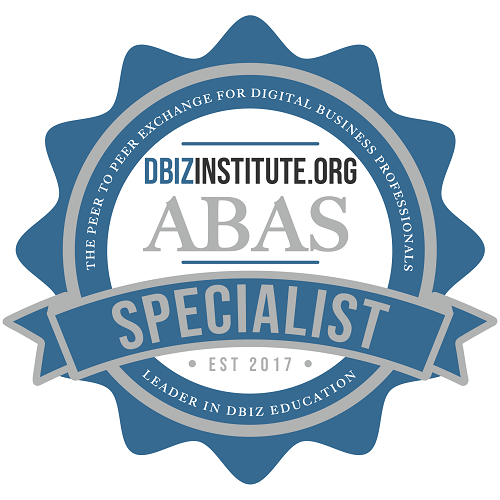Home / Resources
Resources
Discover a Wealth of BPM Knowledge and Expertise at BPMInstitute.org!

An Initial State Process to Accelerate Innovation
When analyzing a function for improvement, it is common practice to document the existing operations into what is widely known as a current state. This current state operational view serves as a baseline for improvements. It identifies the inputs, work steps, and outputs (and often a lot more). It serves to ground the team and provide a starting point for designing a future state. In contrast, future states are the destination. They are the sum total of the improvements to the current state to get to a new more effective and efficient operational state. Generally current state and future state views are documented as process maps or flows. Both the current state and the future state are powerful steps for improvement teams to understand where they are today and where they are going in the future.

How to Lead When Building a Business Capability Model
If you are leading your organization’s business capability model (BCM) development, here are some guidelines that you can follow.

Robotic Business Process Automation is Here
Robotic Business Process Automation is all the rage right now. It is the new cost reduction initiative that many executives are eager to implement. There are numerous conferences focused on Robotic Process Automation (RPA) and the evolution to Cognitive Processing or Machine Learning (AI). There are many emerging companies that show great promise and businesses are strongly considering adopting these tools. The following from Accenture, is a succinct depiction of the spectrum of Robotics, with RPA being the simpler end of the spectrum.

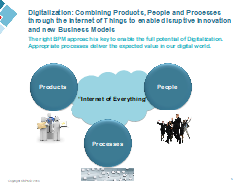
Meet the Author: Dr. Mathias Kirchmer, High Performance Through Business Process Management
Strategy Execution in a Digital World
This management book presents value-driven business process management as a successful discipline to turn strategy into people-and technology-based execution, quickly and at minimal risk. It shows how to achieve high performance successfully in a digital business environment.

How Agile is your Operating Model?
Let me start with a definition of agile as it applies to operating models or processes: “being able to turn on a dime for a dime” and “being able to change faster and more cheaply than your competitors”. These phrases are taken from, who was part of the team who coined the term agile as being relevant to the lean and six sigma community. In this community, agile is associated with short-period (often six-week), test-and-learn projects, at the end of which priorities and direction can be reset based on what has been learned. It is also associated with “minimum viable product”: the way of testing a new idea.

Using BPM to Meet Today’s Investment Management Industry Challenges
In today’s demanding business environment that rewards flexibility, speed, quality, efficiency, effectiveness and innovation, a strategically competitive middle- and back-office strategy and its operational execution can be a roadmap to achieve sustainable competitive advantage. Business Process Management (BPM) helps an asset management company achieve these characteristics in the components of its value chain. Applying the BPM discipline achieves measurable process improvements that lead to organizational performance improvements in the middle- and back-office.
Middle- and BACK-OFFICE challenges

How to Be Agile in a Non Agile Organization (Part 1):
Delivering Agile Projects within Structured Project, Process and Quality Management Frameworks
The most important factor in successful Agile adoption (and expansion) is aligning it to the culture, standards and constraints of your organization. Even the most effective Agile project work risks losing executive support if it cannot meet the overarching management, compliance, administrative and reporting structures established by the organization. Unless you are in the unique position of being able to adjust your organizational structures to suit the flexibility of Agile approaches, you will need to find a way for your team’s Agile work to comply with these corporate standards. Thankfully, this is an achievable goal, although it may take some creative thinking to make it work within your specific organizational constraints.

Lessons from the Field: The Bold Business Architect
Picture this: you get this fabulous opportunity to work with a business on bringing its new strategy to life. They share with you the fanciest PowerPoint slides you have ever seen describing their vision, mission, and the tremendous opportunities they see in the marketplace and how uniquely they are positioned to gain market share. You dive right in and open up your business architecture toolbox and get to work. You map out their strategy, document the business model, create a capability map and conduct a maturity assessment. Life is great and the energy level is high. As time goes on, though, you start to get an odd feeling that something isn’t right. You find pockets of disengagement across the organization. You are finding a growing number of major capability gaps. There are parts of the organization you really can’t figure out what they do. And worst of all: you can’t figure out why anyone would really choose to buy from your company versus a competitor.

The Challenges in Deploying Operational Excellence
Deploy: to organize and send out (people or things) to be used for a particular purpose; to open up and spread out the parts of (something, such as a parachute). Source: Merriam-Webster’s Learner’s Dictionary
Organizations face many challenges when trying to deploy or redeploy an improvement program. So much of the success of any initiative depends on how it is implemented and used by the organization. To be successful, you must consider what is the correct method to use, what are the change management issues, and how it will be deployed. A one-size-fits-all mentality will not work in any of these three areas.
It all begins with culture
We must begin with self-examination of the current culture in your organization. Several questions must be answered:

Disruption, Innovation and the Art of Business Architecture
Over the past decade, the Business Architecture community of practice has built a firm foundation of methods, practices and tools that allow organizations to map their place in the business world, assess the viability of their capabilities, and chart a course towards their future. And yet, Business Architecture still has a long way to go to permeate the public consciousness. In fact, while concepts such as change, disruption, and innovation have fired up the imagination of entire industries, Business Architecture’s public brand as a game-changer has drawn more muted reactions, as the Google Trends diagram below starkly demonstrates.

Figure 1: Google Trends graph (dated 9/16/2017), keywords: disruption, innovation, Business Architecture
The Complex Organization

Enticing Executives with Visual Analysis
Once you have your current state model, what do you do with it? How do you share it with the Process Owner and Executive Sponsor and spark their interest? My experience is that executives looking at a model that is 30 to 60 steps long are impressed and say something like, “Wow, that process is complex. I can see it has a lot of steps which could take a long time.” But they are not interested in reviewing every single step and getting into the details.

5 Questions to Assess Digital Transformation at the Enterprise Level
Digital transformation is still one of the business buzzwords of the year. It is estimated that 89% of organizations have digital transformation as a business priority. But if you feel like you’ve come to a standstill in your digital transformation efforts, you are not alone. As many as 84% of digital transformation efforts fail to achieve desired results. And that statistic would likely be higher if we examined only the larger, enterprise level efforts. What exactly is digital transformation? According to researchers at MIT Sloan, digital transformation occurs when businesses are focused on integrating digital technologies, such as social, mobile, analytics and cloud, in the service of transforming how their businesses work. The preoccupation with digital transformation makes sense given the pace of change. Richard Foster, at the Yale School of Management, found that the average lifespan of an S&P company dropped from 67 years in the 1920s to 15 years today.

The Single Best Measurement of Agile Success
Tell me if this sounds familiar. Organization A decides to adopt Agile methods and begin the lengthy and possibly (probably) expensive transformation process. In doing so they engage in lots of training, read books, attend conferences and listen to webinars. They engage a consulting organization to help coach the change. But, after a period of time has gone by someone brilliantly asks, “So, are we better for having done this?” Great question. Many companies have no idea whether or not these Agile methods are actually helping the bottom line and the way we deliver overall. We figure that if teams are sprinting and doing retrospectives we must be better. If teams are co-located and I see sticky notes on the wall, we must be better.

4 Tips to Maximize Project Walls
Projects create a maelstrom of documentation – charters, workplans, issues logs, process flows, requirements, solution designs, parking lots, and many more. With the deluge, invariably some of the documentation is relegated to the hard drive of death – hidden out of the view of those who might benefit from its availability.

Modeling Standards are Key to Scaling BPM Adoption
OK, you have completed a successful pilot BPM project and your organization is now committed to a major enterprise BPM initiative. There are many steps you need to undertake now, too many for a single article such as this, but in this article we will explore one which is often overlooked. The BPM industry, both tool vendors and consultants, like to talk about how much simpler it is to develop solutions with BPM than with traditional programming tools. While this is certainly true, too many organizations interpret this as license to short-cut the disciplines which they have found to be necessary in all other forms of solution development. This article will discuss the importance of modeling standards, provide guidelines on how to develop appropriate standards and perhaps most important how to make them an integral part of your process.

Four of the Top Reasons for Operational Excellence Failure
Given that operational excellence (Op Ex) was built on a solid foundation of total quality management principles, it’s a bit surprising that as many as two thirds of Op Ex programs fail to meet expectations. While there are many reasons accounting for the failure of enterprise wide Op Ex programs, the following are arguably the top four in my experience.
Lack of Purpose
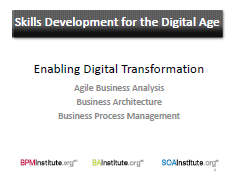
Career Options for Business Analysts and Project Managers
We live in times where the only constant is change. Efforts to shift to Digital Business and transformations are underway everywhere. It’s no wonder that many of our members, especially analysts and project/portfolio managers, are trying to figure out where they’ll go next in their careers and what types of skills they’ll need to have continued success.
This webcast brings together three preeminent subject matter experts to provide you with insight into three disciplines that we believe have staying power and are potentially a good fit for you and your career.
For each topic, we discuss:

Walking the Business Architecture Talk
One of the questions I’m asked frequently is “how do I launch business architecture in my company?” I know it can be challenging–I have a lot of great responses to this question, and I offer classes specifically on this topic and consulting with organizations to do it. At the same time, I believe that benefits from business architecture techniques and models are already attainable for you regardless of your defined role, position or formality in the business. I always say, once you start thinking and acting like a business architect, regardless of where you sit, things will make sense to you in a new way and you will provide value for the business. I was a few minutes early for a lunch meeting a few weeks ago, so I stopped by a furniture store across the street from the restaurant that had a big sale sign out front. When I stepped into the store, it became clear by the room vignettes (and the prices) that this was an interior design retail showroom.

Decisions and Digital Transformation
As I pondered topics for this quarter’s missive, I decided to browse presentations from some recent conferences that focused on both technology generally, and financial services specifically. The former was full of optimism and excitement over a new day dawning and the power that advances in big data, analytics, and decision management might bring. The latter was replete with complaints over burdensome regulations, an inability to meet customer’s needs, and the desire to modernize extremely outdated legacy platforms. It truly seems that the approaches we discuss regularly here at BPMInstitute.org are not being fully recognized as potential solutions to alleviate the significant pain being felt. But why?

Robotic Process Automation (RPA), BPM and BPMS
There’s a fair amount of excitement around Robotic Process Automation or RPA. Some of it is just hype and some of it has substance. In February of this year, *Forrester forecasted that the size of the RPA market will reach $2.9 billion by 2021 – only to quickly point out that this number pales in comparison to the size of the total Artificial Intelligence (AI) spend estimated at $48.5 billion. Forrester also estimated that there will be over 4 million robots doing office and administrative and sales and related tasks by 2021 and the cost of an RPA robot is currently in the $5,000 to $10,000 range per annum. As a single robot may replace as many as three to five workers – the savings are easy to calculate.** Further, the return on investment (ROI) from RPA has been predicted at a potential of 30–200% —in the first year. ***
